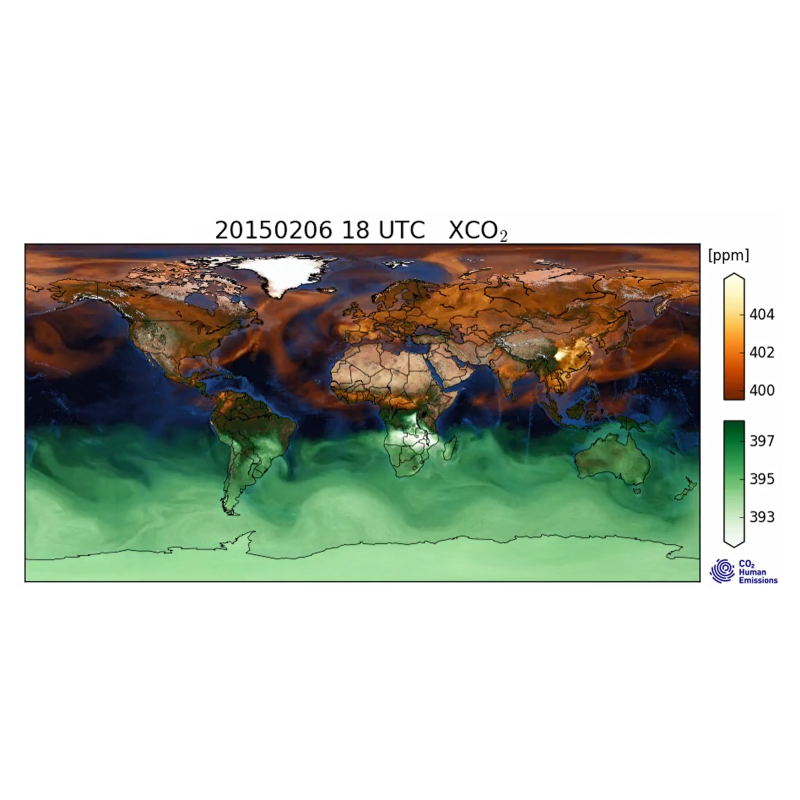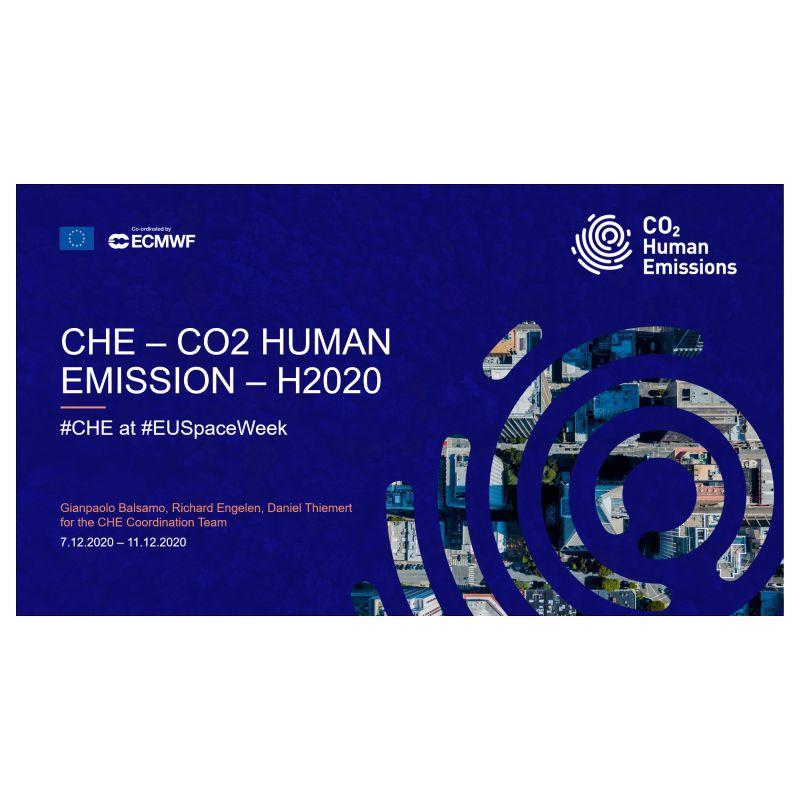Following the release of the CHE Tier 1 CO2 Global Nature Run, CHE coordinator ECMWF has created an animation that shows the atmospheric-column CO2 variability with respect to the global annual mean of 399 ppm.
The animation shows the atmospheric-column CO2 from the CHE tier 1 nature run. Nature runs are simulations that aim to be as realistic as possible in order to provide a reference that reproduces typical values and variability associated with the different parameters and processes that we would like to monitor with an observing system from satellites to surface stations. In the animation we can see the variability with respect to the global annual mean of 399 ppm and highlights the fast transport associated with weather systems, as well as the slower changes between the hemispheres following the seasonal cycle and the annual growth rate of the biogenic and anthropogenic fluxes of CO2 at the Earth's surface.
The CHE tier 1 global nature run simulation is part of a library of simulations produced by the CHE project to support the design of an anthropogenic CO2 Monitoring and Verification Support (MVS) capacity as outlined in the EC CO2 report.
The data is free and open access to any user interested in information on vertical profiles and total column averages of atmospheric carbon tracers (CO2, CH4 and CO) at high resolution (9km). The main meteorological parameters associated with the transport of these tracers in the atmosphere are also available (see CHE D2.2 for a complete list of all parameters).
There is a wide range of potential applications to the nature run data set: from synthetic observations in Observing System Simulation Experiments (OSSE) to the assessment of the small-scale variability in the estimation of representativeness errors, or as boundary conditions for regional models.




